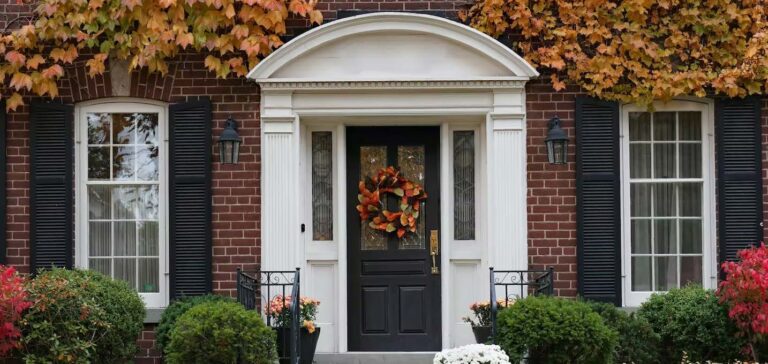The rising trend has some people reconsidering the family-friendly functionality of their home’s layout.
They say home is where the heart is. And for a rising number of people, home is also where a collection of family members from different generations is.
The latest findings on this subject from the Pew Research Center revealed that the share of the U.S. population living in multigenerational households was 18%. And from 1971 to 2021 – a half century span – the number of people living in multigenerational households throughout the country quadrupled.
But what is a multigenerational household, exactly? The Pew Research Center considers them to be households that contain at least two generations of adults over 25 years old. The U.S. Census Bureau, however, constitutes the formation as people from three or more generations dwelling under one roof.
Why is this household formation growing in popularity?
The reasons why some choose to live in a cross-generational household vary, but caring for family members, upholding traditions, and saving money are at the forefront. The COVID-19 pandemic was one noteworthy catalyst for people moving in with relatives.
“For some cultures, living in multigenerational households is part of their traditions. Cities that have a lot of multigenerational households often have a very high cost of living and large immigrant populations,” shares Todd Luong, an agent with RE/MAX DFW Associates in Frisco, Texas. “For some of those households, however, saving on housing costs is not always the main reason they live together. Being able to provide support for childcare and eldercare is a very common reason for them to be under one roof.”
But, as Luong pointed out, combining households to save money is a driving factor of the trend’s upward motion for all.
“The rise in living costs and the lack of affordable housing are definitely reasons for multigenerational households. Many millennials are postponing marriage and homeownership, so we are seeing a sizable percentage of them still living with their parents,” he adds.
Anthony Askowitz, Broker of RE/MAX Advance Realty – a brokerage with seven locations in the Miami, Florida area – says cost is a leading driver for multigenerational living in his market, too.
“There is one primary reason for merging households today: The rise in cost of living is fast out-pacing increases in income. Florida’s ‘Save Our Homes’ cap on real estate taxes helped, until insurance became more expensive than mortgage payments,” he says. “Recent bills are requiring condominium buildings to be inspected and reserves to be fully funded, which has resulted in many seniors in 55+ condominiums facing special assessments they cannot afford. No longer able to afford their homes, some have looked to move in with their adult children.”
He continues, “In the reverse, college graduates with astronomical student debt are going home to live with mom and dad until they can save enough to buy. Renting is not aways an affordable option any longer.”
A recent study from RE/MAX explored how younger generations, specifically Gen Z and Millennials, are navigating homeownership today – and while 63% of those surveyed are interested in becoming a homeowner, they’re grappling with factors like high interest rates and high market demand in the meantime. Many people from these cohorts, in turn, are spending a bit more time at their parent’s house as they plan next steps.
How can homeowners alter their space to accommodate multiple generations living together?
With family moving in, many homeowners want to ensure all cohorts under one roof have the space they need to feel independent. There are a few key ways to get there.
One option is working within the existing footprint and layout to re-designate space. If parents or grandparents are moving it, for example, it may be beneficial to repurpose a first-level room into a bedroom to avoid stairs. With this dynamic, homeowners may also need to implement other features that promote accessibility like an external ramp or walk-in shower.
Another option is adding or refurbishing an accessory dwelling unit (ADU), otherwise known as in-law suite or granny flat. An ADU is a smaller scale living space that typically contains all of the amenities someone would need to be independent from the rest of the home, like a bathroom, kitchen, and even separate entrance. Qualifications for ADUs vary by location, but they either exist inside a home, attached to a home, or stand alone on the same property.
“Space permitting, we see a variety of innovative options. Garages and carports are the easiest places to convert into a separate living space. The biggest challenge in conversions of these two places is compliance with local building and zoning codes that may require factors like floors to be raised and fire exits established,” Askowitz explains.
Other aspects of homes people regularly finish or convert are attics and basements. And some consider rearranging the layout of existing bedrooms, primarily by adding walls, to create additional private spaces. Bear in mind that many types of home renovations, like adding an ADU, require permits and approvals from the local government.
When ADUs are no longer needed for multigenerational living purposes, some homeowners assume they can easily rent it out and generate passive income. While an ADU will likely add value to a property, Askowitz warns that each city and town has its own rules and regulations for acquiring rental permits.
Whether it’s a smaller-scale renovation like making bathrooms ADA-friendly, or a more substantial renovation like building an apartment over the garage, it’s best to make sure everyone involved is on the same page.
“Sit down together and discuss the differences between wants and needs. Determine how long will you be living all together and what modifications will cost,” Askowitz says.
What does this look like when buying a new home?
Those who are buying a house for the first time, or are selling a home to buy anew, may prioritize the prospect of multigenerational living in their home search process. Askowitz explains how certain floorplans naturally cater to multigenerational living more than others.
“Homes with original split bedroom floorplans offer the option of having a semi-private space for the additional family members without requiring larger-scale renovation,” he says.
It’s an aspect of the homebuying process some may want to consider now, even with no immediate plans to have relatives move in.
“For many of my clients who are intentionally seeking out a multigenerational home, having extra bedrooms and baths on the first floor is one of the most important features for them,” Luong says. “Even if they don’t have elderly family members now, it’s something to be prepared for in the future.”
Searching for a home that can house everyone you love? Check out the new Homebuyer’s Guide from RE/MAX for helpful insights on getting the process going – and then connect with a local RE/MAX agent for guidance.
Article originally appeared on RE/MAX.com.








